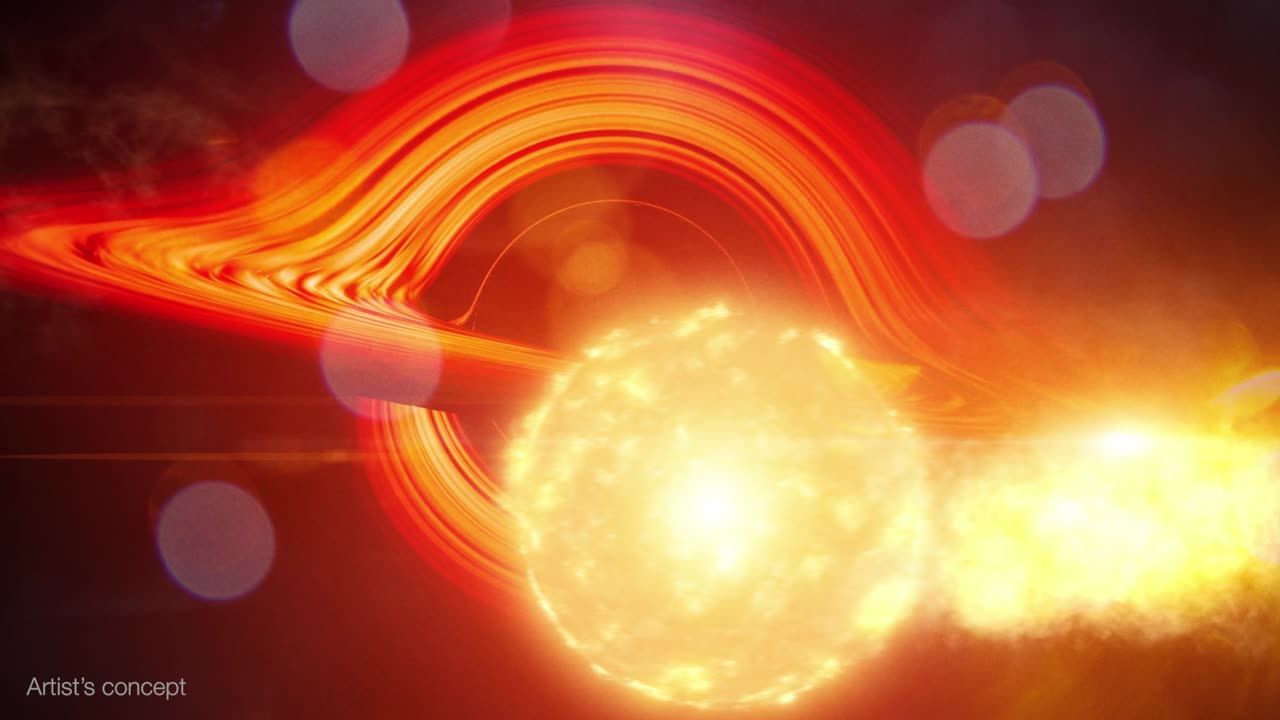Premium Only Content

Swift Utilizes Innovative Technique to Detect a Feeding Black Hole
Watch to learn how an update to NASA’s Neil Gehrels Swift Observatory allowed it to catch a supersized black hole in a distant galaxy munching repeatedly on a circling star.
Using NASA’s Neil Gehrels Swift Observatory, which launched in 2004, scientists have discovered a black hole in a distant galaxy repeatedly nibbling on a Sun-like star. The object heralds a new era of Swift science made possible by a novel method for analyzing data from the satellite’s X-ray Telescope (XRT).
When a star strays too close to a monster black hole, gravitational forces create intense tides that break the star apart into a stream of gas. The leading edge swings around the black hole, and the trailing edge escapes the system. These destructive episodes are called tidal disruption events. Astronomers see them as flares of multiwavelength light created when the debris collides with a disk of material already orbiting the black hole.
Recently, astronomers have been investigating variations on this phenomena, which they call partial or repeating tidal disruptions.
During these events, every time an orbiting star passes close to a black hole, the star bulges outward and sheds material, but survives. The process repeats until the star looses too much gas and finally breaks apart. The characteristics of the individual star and black hole system determine what kind of emission scientists observe, creating a wide array of behaviors to categorize.
On June 22, 2022, the XRT captured Swift J0230 for the first time. It lit up in a galaxy around 500 million light-years away in the northern constellation Triangulum. Swift’s XRT has observed nine additional outbursts from the same location roughly every few weeks.
Scientists propose that Swift J0230 is a repeating tidal disruption of a Sun-like star orbiting a black hole with over 200,000 times the Sun’s mass. They estimate the star loses around three Earth masses of material on each pass. This system provides a bridge between other types of suspected repeating disruptions and allowed scientists to model how interactions between different star types and black hole sizes affect what we observe.
Swift J0230’s discovery was possible thanks to a new, automated search of XRT observations called the Swift X-ray Transient Detector.
Credit: NASA’s Goddard Space Flight Center
-
 40:15
40:15
NAG Daily
13 hours agoThe Rezendes Rundown Ep. 19 - Mad Bad Science
611 -
 31:57
31:57
Uncommon Sense In Current Times
16 hours agoThe DEI Housing Hoax | Dan Huff on Zoning, Manufactured Crisis & the War on Suburbs
5.76K -
 2:55
2:55
From Zero → Viral with AI
1 day ago $0.02 earnedAI Misconceptions: Why Small Businesses Hold the Real Advantage 🚀
9 -
 LIVE
LIVE
BEK TV
22 hours agoTrent Loos in the Morning - 9/25/2025
292 watching -
 2:39
2:39
The Official Steve Harvey
1 day ago $0.05 earnedThese books didn’t just change my mind, they changed my life. 📚💯
471 -
 1:35:35
1:35:35
Investigate Everything w/ Brian O'Shea
13 hours agoPart 1: "Evil & Logistics: Why is the Left So Good At Both” w/ Brian O’Shea & Bill Stebbins
405 -
 1:20:31
1:20:31
CharLee Simons presents DO NOT TALK
1 day agoR.I.P. MEDIA FREAKS
841 -
 16:39
16:39
Professor Nez
18 hours ago🚨PRICELESS: Trump Just EMBARRASSED Macron in New York
43.5K19 -
 25:51
25:51
DeVory Darkins
17 hours ago $5.42 earnedDemocrats ghosted and stunned by Trump as Routh attempts to off himself after guilty verdict
15.3K59 -
 21:15
21:15
Actual Justice Warrior
15 hours agoJimmy Kimmel DECLARES Victory
31.2K40